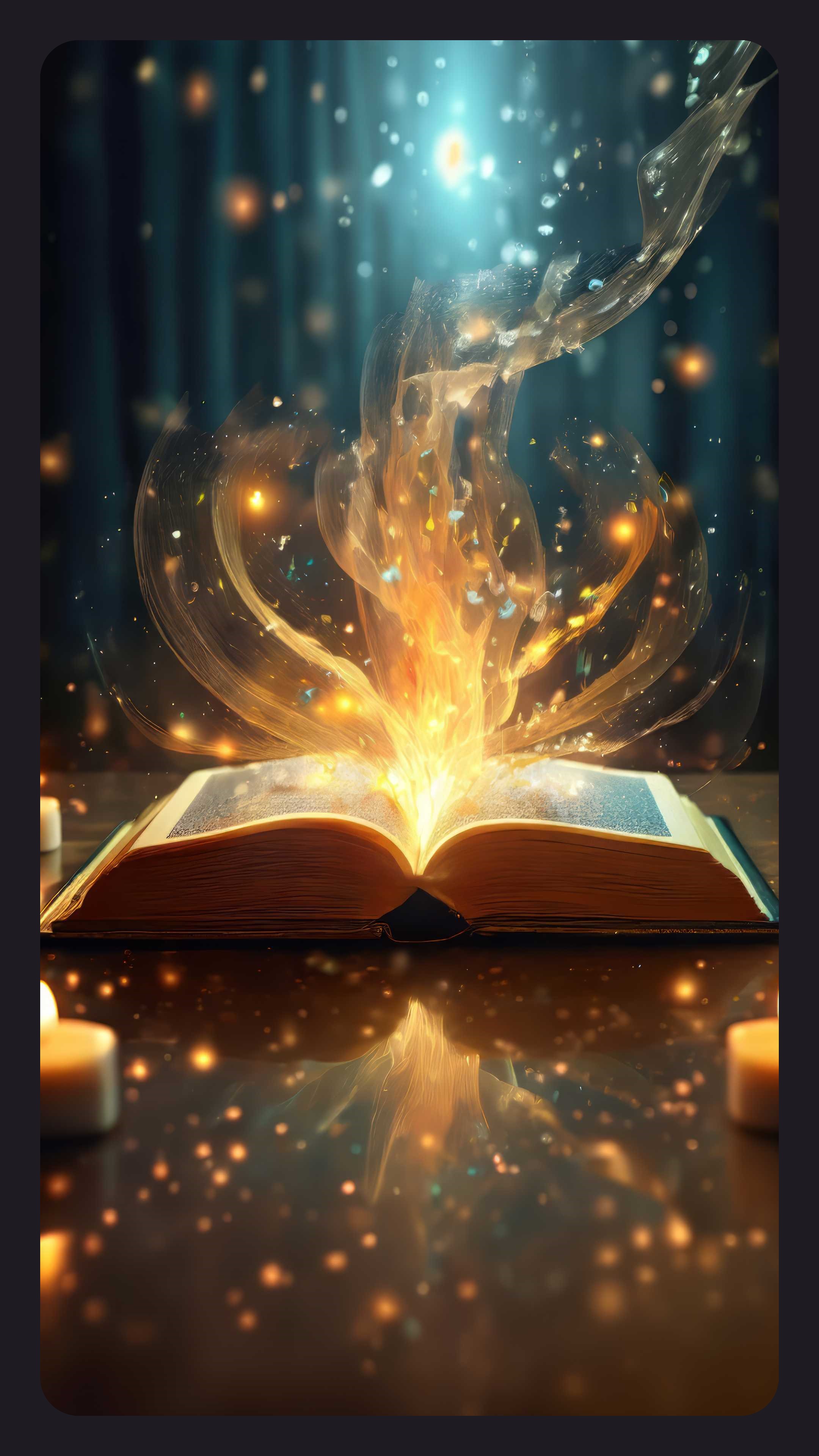The Modern Magical Taxonomy
We wouldn't be where we are without it. Dunno if that's good or bad...
The Modern Magical Taxonomy, penned by Agranthor, is the foundation for magical theory in its current form. Within it, Agranthor details the structure of each of the eleven magical disciplines in detail, both in the written word and illustration. The theorems contained in the taxonomy have been refined over the past millenium, but the fundamentals laid out in the MMT have borne countless fruits, stretching the bounds of magic in innumerable directions.
 Agranthor, a noteworthy and significant practitioner in their own right, was concise; a rarity among wizards and a highly desirable trait in the eyes of scholars. The entirety of the original MMT format spans a mere 1,207 pages. To the uninitiated, this may seem a large tome, but to the magically inclined, it barely qualifies as a short story. Early editions of the MMT are sought-after collectors' items found among the wealthy, upper echelons of society both arcane and otherwise. The richest of merchants showcase a first edition of the MMT as a display of honor and status while engrossed magical scholars may bargain to examine the original writings bereft of any intervening translations.
Current editions of the MMT are well-annotated, with numerous citations and links to leading interpretations and extensions to the taxonomy. Standard copies are often larger than 1,207 pages due to the amount of additional content integrated into the text, but more expensive and convenient editions integrate transmutation and transformation spells. These display the annotations, notes, and citations as illusory pages opened at the sides of the book, often complete with indexes and intra-book references.
So-called 'Incarnate' editions are integrated as part of a timelet and project a fully illusory copy that can be adjusted to hover wherever the user needs (within reason). Replete with every critical annotation and citation, the Incarnate MMT incorporates complex hex magic into the transmutation framework that automatically adjusts according to the user's mind. Wizards with enough experience can read, search, and take notes with literally just a thought. However, should an enterprising adversary gain access to the timelet, they may alter the enchantments to harass the individual via hex.
Agranthor, a noteworthy and significant practitioner in their own right, was concise; a rarity among wizards and a highly desirable trait in the eyes of scholars. The entirety of the original MMT format spans a mere 1,207 pages. To the uninitiated, this may seem a large tome, but to the magically inclined, it barely qualifies as a short story. Early editions of the MMT are sought-after collectors' items found among the wealthy, upper echelons of society both arcane and otherwise. The richest of merchants showcase a first edition of the MMT as a display of honor and status while engrossed magical scholars may bargain to examine the original writings bereft of any intervening translations.
Current editions of the MMT are well-annotated, with numerous citations and links to leading interpretations and extensions to the taxonomy. Standard copies are often larger than 1,207 pages due to the amount of additional content integrated into the text, but more expensive and convenient editions integrate transmutation and transformation spells. These display the annotations, notes, and citations as illusory pages opened at the sides of the book, often complete with indexes and intra-book references.
So-called 'Incarnate' editions are integrated as part of a timelet and project a fully illusory copy that can be adjusted to hover wherever the user needs (within reason). Replete with every critical annotation and citation, the Incarnate MMT incorporates complex hex magic into the transmutation framework that automatically adjusts according to the user's mind. Wizards with enough experience can read, search, and take notes with literally just a thought. However, should an enterprising adversary gain access to the timelet, they may alter the enchantments to harass the individual via hex.
The Book Itself

The Modern Magical Taxonomy by SK Kage (via Firefly)
The Three Schools of Magic
Magical theory prior to the penning of the MMT focused on practical application, almost always on evocation spells. Pyromancy existed; wizards could evoke ice and water; rock could be moved; and lightning could be struck. The basic forms of both conjuration and law schools were explored, but not detailed extensively or consistently. While no magic was formally referred to as a discipline, wizards would prefer to delve deeply into one aspect of magic to the exclusion of others, generally the magic of their attunement. Pre-Agranthor historical records do not detail the links between different disciplines. Agranthor researched, coalesced, consolidated, and documented Turan's limited knowledge on the subject and greatly expanded upon it. As one first-hand biographer wrote nearly a millennium ago, 'Agranthor had neither great magical gifts nor surpassing intelligence. But what they lacked in both, they made up for in diligence and cold, hard logic.' Less clearly, the same biographer noted Agranthor was 'a genius only insofar as a drunk has passing familiarity with wine and spirits.' (Scholars debate how to interpret this statement.) Regardless, Agranthor's core belief reflected the prevailing wisdom of the time: the world was constructed of opposing forces set in balance. Pyromancy was in opposition to cryomancy; creation was in opposition to destruction; and so forth. In this way, Agranthor organized the eleven disciplines into three schools of magic:- Evocation: The manipulation of primal energies relating to the four core elements of fire, air, earth, and water (and their various forms).
- Conjuration: The manipulation of matter and substance comprising the world, inclusive of enchantments.
- Law: The manipulation of that which governs the actions of beings of all types, including humanoids, demonkind, flora, and fauna.
The Eleven Disciplines of Magic
The disciplines of magic are split unequally between the three schools of magic: four for evocation, four for conjuration, and three for law. Aeromancy, Cryomancy, Geomancy, and Pyromancy comprise the evocation school. Creation, Destruction, Transformation, and Transmutation comprise the conjuration school. Binding, Hex Magic, and Summoning comprise the law school. Each of the disciplines in the evocation and conjuration schools is an opposite, or 'antipode,' of another. For example, aeromancy is the antipode of geomancy. Wizards attuned to one discipline are often adept at learning the antipode of their attunement, but express more difficulty in casting spells from the other disciplines. While they are the opposite of each other, the mana construction of antipodes are 'reversed' (to put it crudely). Once a wizard becomes sufficiently capable, they can begin to 'flip the mana' to approximate the casting of a similar antipode spell. That being said, it is by no means easy to cast the antipode of an attunement; it's simply easier than an entirely separate magic. For example, a typical fireball spell utilizes a clockwise and forward rotation of mana (building heat) whereas a cryosphere manifests through counter-clockwise and backward rotation of mana (diffusing heat). This is only an approximation. All wizards must adjust their spellcasting to suit their own mana and style, but spellcasting structures have commonalities. One needs look no further than the emergence of the counterspell to validate the results of the MMT, having emerged swiftly in the decades following its publication. Antipode pairs within evocation and conjuration are as follows:- Aeromancy and Geomancy
- Cryomancy and Pyromancy
- Creation and Destruction
- Transformation and Transmutation
Book Availability
Lost your copy of the MMT? Burned it by accident? No problem! The Kingdom Academies provide standard copies to all wizards free of charge (maximum six per calendar year). Yeah, if you call ad-supported 'free.'Schools of Magic
Written by Sheyla Enelladalcol Aeleat
Edited by Shikya Enelladalcol Aeleat
Mindcepts by Ella Enelnasalcol Malric
Edited by Shikya Enelladalcol Aeleat
Mindcepts by Ella Enelnasalcol Malric
and Alvix Tuvar



Comments